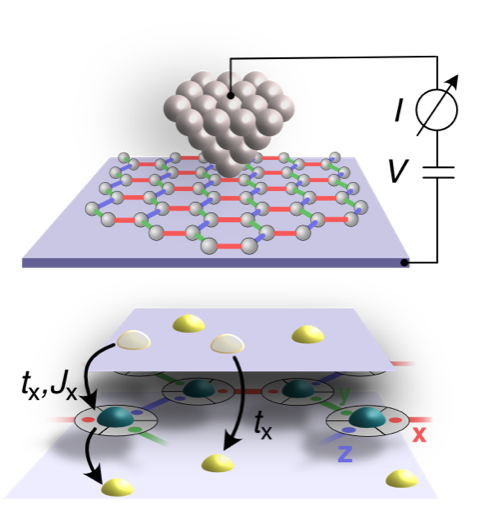We are entering an era in which new quantum materials with exotic properties can be designed, guided by the rules of quantum mechanics. Tuning the complex interplay of electronic interactions, spin correlations, and geometric phases of wavefunctions, we can endow materials with new macroscopic quantum properties, such as fractionalized Majorana quasiparticles [1, 2, 3]. These new quantum phases of matter promise applications that range from topological quantum computation to energy-efficient electronic devices.
We use molecular beam epitaxy (MBE) and scanning tunnelling microscopy (STM) to fabricate and investigate a variety of novel low-dimensional quantum materials. STM measurements carried out at ultra-low temperatures are particularly well-suited to characterize the electronic and magnetic materials properties and to visualize new emergent quantum states at atomic length scales. Working in close collaboration with our theory collaborators, our goal is to reveal the microscopic mechanisms underlying the global quantum materials properties. Looking ahead these insights will promote the integration of quantum materials into next generation technological applications.
Beyond quantum materials research, we strive to develop novel STM measurement methodologies. For example, we have implemented Josephson scanning tunneling microscopy to characterize the superconducting order parameter of quantum materials at atomic resolution [4, 5]. In addition, we leverage our technical expertise in milli-Kelvin scanning probe microscopy to develop novel quantum sensing schemes, such as scanning qubit microscopy based on superconducting quantum circuits, to study nanoscale charge carrier dissipation [6].


Selected Publications:
1. B. Jäck, Y. Xie, J. Li, S. Jeon, B. A. Bernevig, and A. Yazdani, Observation of a Majorana zero mode in a topologically protected edge channel, Science 364, 1255-1259 (2019).
2. E.J. König, M.T. Randeria, and B. Jäck, Tunneling Spectroscopy of Quantum Spin Liquids, Physical Review Letters 125, 267206 (2020).
3. B. Jäck, Y. Xie, and A. Yazdani, Detecting and distinguishing Majorana zero modes with the scanning tunnelling microscope, Nature Reviews Physics 3, 541–554 (2021).
4. C.R. Ast, B. Jäck, J. Senkpiel, M. Eltschka, M. Etzkorn and K. Kern, Sensing the quantum limit in scanning tunnelling spectroscopy, Nature Communications 7, 13009 (2016).
5. B. Jäck, E. Eltschka M. Assig, M. Etzkorn, C.R. Ast and K. Kern, Critical Josephson current in the dynamical Coulomb blockade regime, Physical Review B 93, 020504 (2016).
6. B. Jäck, Visualizing dissipative charge-carrier dynamics at the nanoscale with superconducting-charge-qubit microscopy, Physical Review Research 2, 043031 (2020).